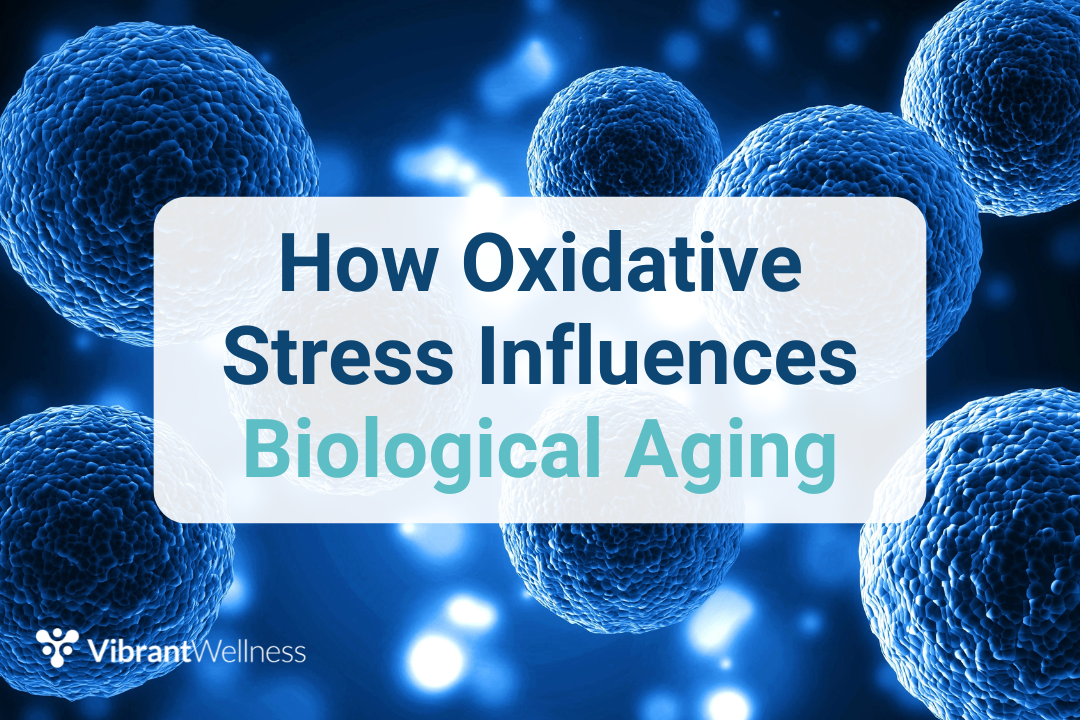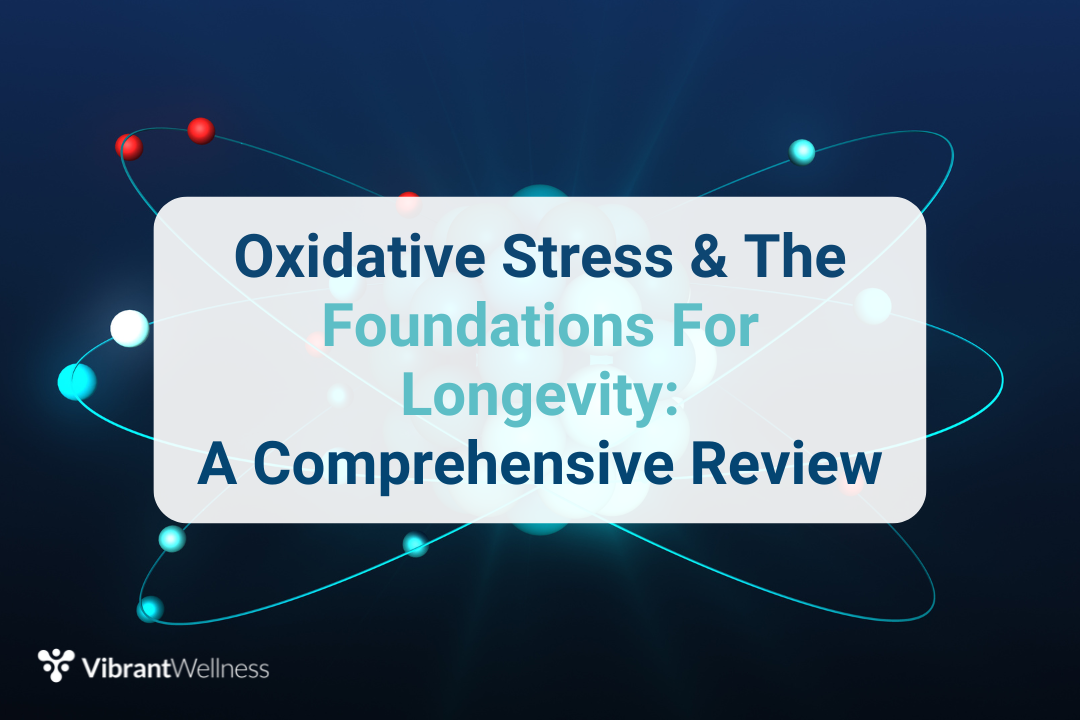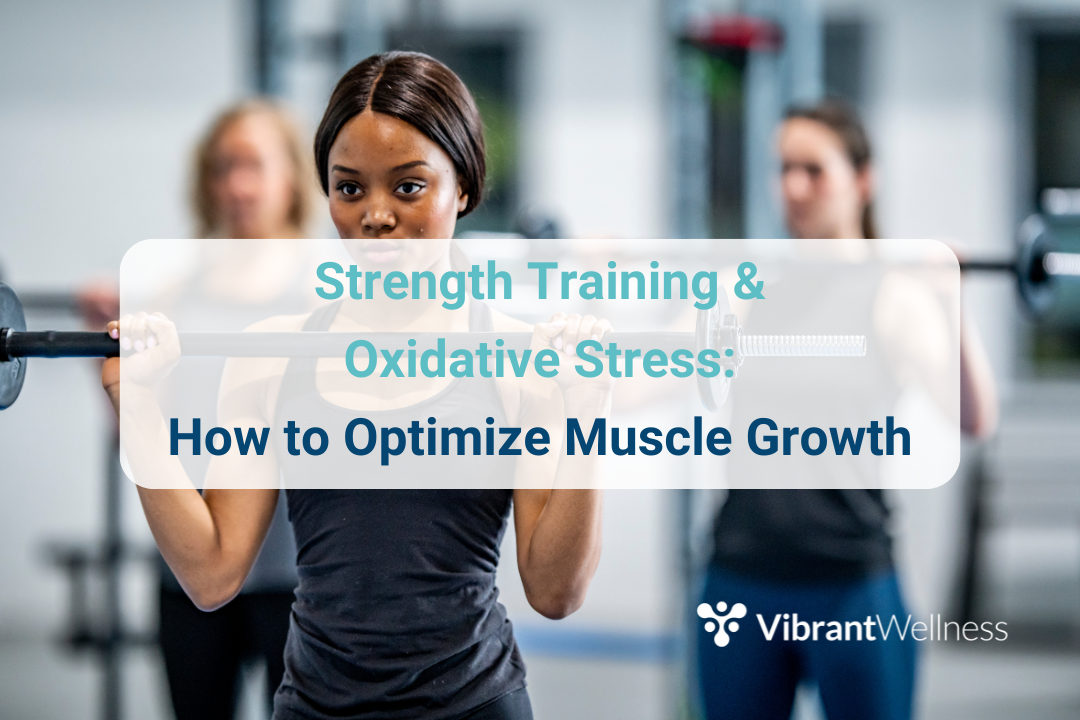The Critical Role of Oxidative Stress in Cardiovascular Health
Why do coronary heart disease and stroke continue to be two of the leading causes of death worldwide, constituting over 30% of global mortality?
The answer lies in the interplay between genetics, the environment, and our diets, which directly influence oxidative stress levels in the body.
Oxidative stress, a key factor behind many chronic illnesses, is heavily implicated in myocardial infarction, ischemia or reperfusion, and heart failure.
Nutrition plays a pivotal role in more than 40% of cardiovascular disease cases, underscoring the importance of antioxidants in combating oxidative stress.
In this article, we’ll explore the pivotal relationship between oxidative stress and cardiovascular health, the mechanisms involved in the pathogenesis of heart disease, and highlight how precision oxidative stress testing can help in the fight against cardiac disease.
Understanding Oxidative Stress

Oxidative stress refers to when the body is in a state of stress or inflammation, but what causes this stress?
When there’s an imbalance between the generation and buildup of reactive oxygen species (ROS) within cells and tissues, and the ability of innate biological systems and dietary antioxidants to eliminate these reactive byproducts, the body will experience stress.
The body generates ROS as a byproduct of mitochondrial respiration or metabolism, or by specific enzymes.
At moderate levels, ROS are beneficial and may play a major role in cell signaling, including apoptosis, gene expression, and the activation of cell signaling cascades.
However, an excess of these unstable molecules triggers damaging chain reactions due to their high reactivity, posing a significant threat to cellular health. These reactive oxygen species are a type of free radical.
Free radicals are molecules with an unpaired electron, making them unstable. Molecules like this are looking to pair with or take electrons from other molecules or compounds.
In the process, they can wreak havoc on other substances in the body.
Excess free radicals can damage carbohydrates, lipids, proteins, and DNA.
When in a state of oxidative stress, the body is overwhelmed with free radicals and other ROS and lacks enough antioxidants to combat them.
Oxidative Stress & Cardiovascular Disease

Oxidative stress can lead to the pathogenesis of diseases, including cardiovascular disease, due to the damaging effects of ROS on the body.
However, ROS have a complex relationship with cardiovascular health.
At low levels, ROS molecules play a major role in cell signaling and function, a process known as redox signaling. This process refers to the specific and reversible changes through oxidation or reduction in cell signaling parts that can regulate things like gene activity, muscle contraction and relaxation, cell growth, migration, differentiation, and death.
But as with other body systems, the balance between beneficial and harmful effects is delicate. An imbalance of ROS can impair heart function and propel the onset of cardiovascular diseases, including myocardial fibrosis, cardiac hypertrophy, heart failure, and myocardial infarction.
One way ROS contributes to cardiovascular disease is through mitochondrial dysfunction. 90% of ROS come from processes in the mitochondria involving the transfer of electrons through a series of complexes. Excessive ROS production can induce irreversible damage to mitochondria, triggering the development of cardiovascular disease.
The damage caused by ROS extends to the molecular level, targeting lipids, proteins, and DNA. Such oxidative modifications can alter critical cellular components, including the sarcolemma, mitochondria, sarcoplasmic reticulum, and the nucleus, eventually leading to disease development.
Antioxidants: Defense Mechanisms Against Oxidative Stress

Antioxidants are the body’s natural mechanism for combating oxidative stress. They work to prevent damage by:
- Neutralizing ROS
- Reducing peroxide formation
- Breaking oxidative chain reactions
- Chelating (binding to) metal ions
- Regenerating other antioxidants
These helpful compounds are naturally present in many fruits, vegetables, nuts, and whole grains. Common antioxidants include vitamins C and E, beta-carotene, selenium, and various phytochemicals.
In addition to consuming antioxidants through diet, the body produces its own antioxidants, such as superoxide dismutase (SOD), catalase, and glutathione, to maintain a balance and defend against oxidative damage.
Essential Antioxidants for Cardiac Health
There are specific antioxidants essential for cardiac health. One example is the SOD group whose main function is to catalyze the conversion of the superoxide radical (O2•-), the precursor to most ROS, into oxygen (O2) and hydrogen peroxide (H2O2). SODs are the most effective antioxidant enzymes in humans.
SOD2, an enzyme found in the mitochondria, is directly linked to the development of cardiovascular disease. Research shows that inhibition of this enzyme can induce both mitochondrial oxidative stress and cardiomyocyte hypertrophy (the enlargement of the heart’s muscle cells).
Other antioxidants that play a role in heart health include:
- Catalase, an enzyme that breaks down hydrogen peroxide into water and oxygen, reducing oxidative stress in cardiac cells. This action protects the heart tissue from damage that can lead to cardiovascular diseases.
- Peroxiredoxins, a family of enzymes that neutralize peroxides harmful to the heart, preventing cellular damage and the pathological remodeling of heart tissue associated with heart disease.
- Glutathione Peridoxases (GPx), a family of enzymes that reduce lipid peroxides and hydrogen peroxide, safeguarding cellular integrity and preventing atherosclerosis by inhibiting oxidative modification of LDL.
With a lack of these beneficial antioxidants during a state of oxidative stress, the body is more vulnerable to developing cardiovascular disease.
Understanding current levels of oxidative damage and bolstering the body's antioxidant defenses through nutrition, lifestyle, and personalized supplements can help safeguard heart health and prevent the onset of cardiovascular conditions.
Assessing Oxidative Stress Levels & Genetic Predispositions 
Oxidative stress can cause a wide range of effects in the body and manifest as non-specific symptoms. Thus, it’s not feasible to identify based on symptoms alone.
To navigate these challenges, you can utilize precision lab testing like the Oxidative Stress Profile.
This profile detects 32 different SNPs and 16 additional damage markers to provide deep insights into the complex factors influencing oxidative stress.
The SNPs will help determine if your patients have genetic predispositions for impaired antioxidant activity, mitochondrial dysfunction, aberrant redox signaling, increased selenoprotein concentrations, and additional factors influencing the body’s response to oxidative stress.
Assessing oxidative damage is crucial in maintaining optimal health and longevity, as this mechanism plays such a central role in the development of various chronic ailments, like cardiovascular disease.
By understanding how well your patients manage oxidative stress, you can create personalized treatment options that cater to their needs and help keep oxidative stress at bay, potentially preventing fatal conditions like heart disease.
Download our customizable Cardiac Health Food Plan. to learn which antioxidants can improve heart health for your patients.
Assessing Cardio Genetics

To assess genetic predisposition for developing cardiovascular disease, you can pair the Oxidative Stress Profile with the CardiaX panel.
This test includes markers for genes directly linked to cardiovascular conditions such as atherosclerosis, abnormal cholesterol production, hypertension, stroke, and even heart attack.
Using the CardiaX panel, you can help your patients detect heart disease risk and create effective treatment plans suited to their unique genetics.
Assessing Cardiac Health

To assess your patient’s overall cardiac health, you can test with the Cardiac Health Panel.
This panel assesses the presence and risk of cardiovascular disease and related diseases including hyperlipoproteinemia, atherosclerosis, hepatic, and thyroid disease.
The Cardiac Health panel tests for sixteen different cardiac health markers including lipids, apolipoproteins, lipoproteins, inflammatory markers, and myocardial stress.
The panel enables early detection of heart disease and associated conditions, allowing for a comprehensive view of heart health and more effective treatment plans.
Oxidative Stress Management as a Pillar of Longevity
Chronic inflammation and disease are significant barriers to longevity, with oxidative stress playing a major role. It often progresses unnoticed, increasing susceptibility to diseases over time.
As we learn more about the mysterious mechanisms of oxidative stress, we can better understand how to combat it and prevent many chronic ailments, like cardiovascular disease.
By utilizing precision testing, you can identify your patient’s oxidative stress status and create personalized wellness and nutrition plans rich in antioxidants, along with cofactors that support optimal natural antioxidant function. These personalized strategies are crucial for preventing disease, enabling longer, healthier lives.
Regulatory Statement:
The general wellness test intended uses relate to sustaining or offering general improvement to functions associated with a general state of health while making reference to diseases or conditions. This test has been laboratory developed and its performance characteristics determined by Vibrant America LLC and Vibrant Genomics, a CLIA-certified and CAP-accredited laboratory performing the test. The lab tests referenced have not been cleared or approved by the U.S. Food and Drug Administration (FDA). Although FDA does not currently clear or approve laboratory-developed tests in the U.S., certification of the laboratory is required under CLIA to ensure the quality and validity of the tests.
 By
By




